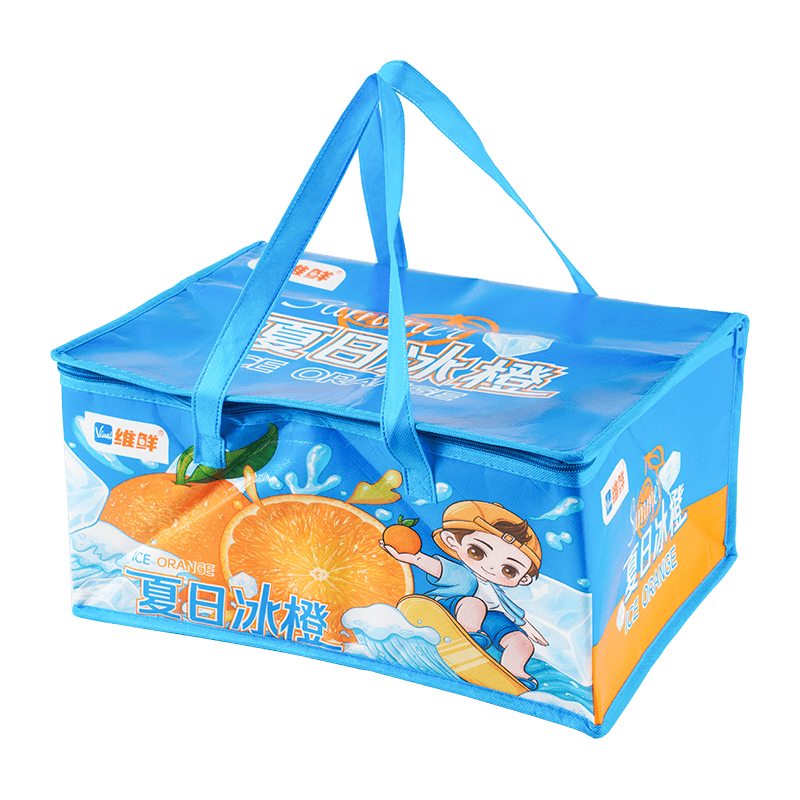As consumers become more eco-conscious, non-woven cooler bags are gaining popularity as sustainable alternatives to traditional insulated carriers. But the critical question remains: can these eco cooler bags truly keep perishables cold, or are they just another greenwashed product? We examine the science, consumer experiences, and industry innovations behind reusable cooler shopping bags to separate fact from marketing hype.

The Science of Non-Woven Insulation
Unlike conventional cooler materials like foam or plastic, non-woven cooler bags rely on layered polypropylene fibers with air pockets that provide thermal resistance. Independent lab tests show:
- Average temperature retention: 3-5 hours (vs. 6-8 for premium foam coolers)
- Peak performance when pre-chilled before use
- 30% better insulation when combined with ice packs
While not matching high-end coolers, these eco cooler bags work sufficiently for:
- Grocery trips under 2 hours
- Office lunch transport
- Short picnic outings
Real-World Performance Tests
Consumer reports on reusable cooler shopping bags reveal:
- 78% of users found them adequate for weekly grocery runs
- results when loading with pre-frozen items
- Limitations in heat (above 90°F/32°C)
Sustainability vs. Functionality Trade-offs
The environmental benefits of eco cooler bags are clear:
- 200+ reuses compared to disposable foam boxes
- 100% recyclable materials
- 60% lower carbon footprint than plastic coolers
However, some compromises exist:
- Less insulation than petroleum-based alternatives
- Requires proper care (hand wash recommended)
- Bulkier than single-use options when stored
Industry Innovations Improving Performance
Manufacturers are enhancing reusable cooler shopping bags through:
- Phase-change materials - Wax-lined panels that absorb heat
- Reflective inner coatings - Aluminum layers to repel radiant heat
- Hybrid designs - Combining non-woven exterior with foam inserts
These advancements help bridge the gap between sustainability and functionality in non-woven cooler bags.
Expert Usage Tips
improve your eco cooler bag's effectiveness by:
- Pre-chilling the bag for 30 minutes before use
- Grouping cold items together
- Using ice packs instead of loose ice
- Avoiding overstuffing to maintain air circulation
- Storing in cool, dry places between uses
Premium non-woven cooler bags now feature:
- Antimicrobial treatments
- Fold-flat designs
- Integrated temperature indicators
Market Growth and Consumer Trends
The global reusable cooler shopping bags market is projected to grow 12.4% annually through 2028, driven by:
Plastic bag bans in 78 countries
Grocery delivery services adopting sustainable packaging
Outdoor recreation enthusiasts seeking greener options
Premium non-woven cooler bags now feature:
- Antimicrobial treatments
- Fold-flat designs
- Integrated temperature indicators
While eco cooler bags can't yet match the ice retention of premium coolers, they provide sufficient chilling for most daily needs while offering significant environmental advantages. As material technology advances, these reusable cooler shopping bags are poised to become the standard for eco-conscious temperature control.
For consumers, the choice comes down to:
- Priority on sustainability → Non-woven versions excel
- Need for extended cooling → May require supplemental ice packs
- Frequent outdoor use → Consider hybrid insulated models
The bottom line? Non-woven cooler bags work remarkably well for their intended purpose - keeping food cold during typical urban activities while drastically reducing waste. As with any eco-product, managing expectations and using them appropriately is key to satisfaction.



 English
English Español
Español عربى
عربى







